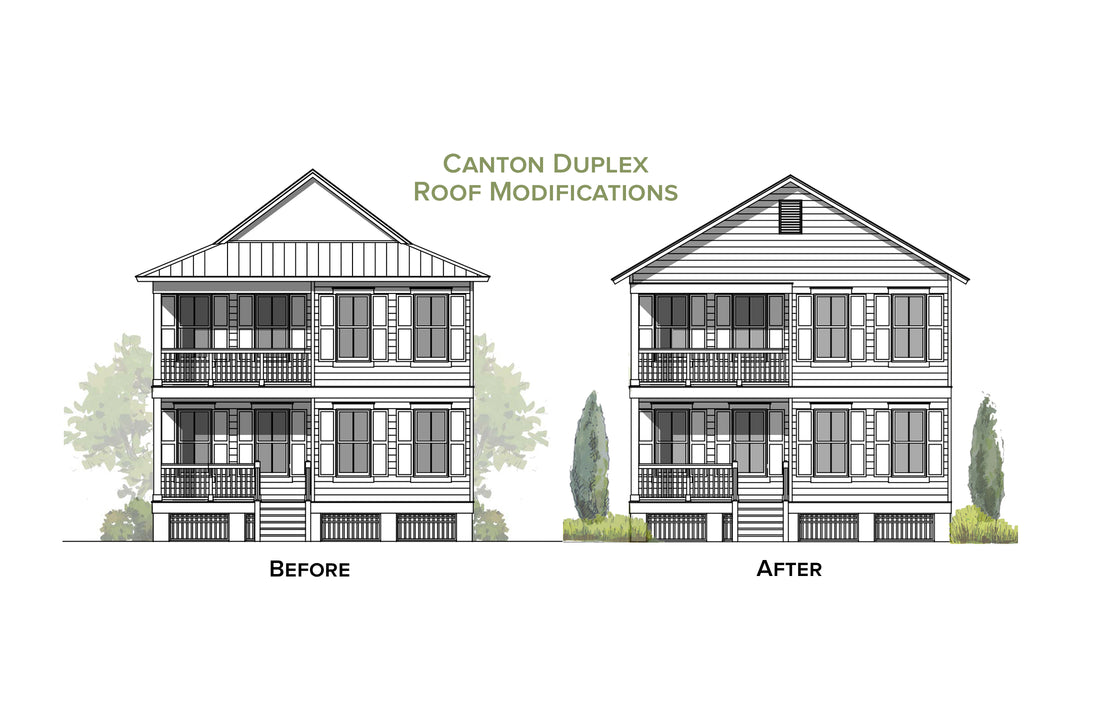Have you ever asked a tailor to alter a suit to get a better fit? You can do that with house plans, too. In the case of house plans, the tailoring is done by an architect, architectural designer, contractor, or engineer (depending on local regulatory requirements). They can alter the house plans to better fit:
- your site
- the needs of your project
- local regulations
- your preferred architectural style
Modifying house plans is a great way to get a custom fit while preserving the cost advantage that comes with using stock plans.
A customer in Washington recently licensed the Canton Duplex by Artifex. In addition to modifying the plans to meet local amendments to the building code, the customer wanted a different roof style. The Canton was originally designed with a gable-on-hip roof, which isn't a style often seen in Washington. So we obtained a quote to change the roof to a gable roof style. We worked with an architect to manage the modifications. And we delivered the new construction documents to the customer when they were complete.
If you're thinking of commissioning modifications, there are a few things to keep in mind:
Modifications are custom work.
Unlike house plans, modification work is performed on a custom basis. Instead of a one-time license fee, you're paying a professional an hourly fee to change all of the construction details that are affected by the changes you need.
Modification work is more complicated than you think.
What seems like a simple change on a floor plan can be complex on the construction drawings. Imagine you wish to swap the position of a kitchen stove and sink, for instance. The architect will need to revise the floor plan, electrical schematic, plumbing schematics, and cabinet elevations to make that single change.
Some modifications are easier than others.
Change a window to a door? No problem. Move a bedroom wall? Can do. Change the footprint of the home? Yikes.
Changing the dimensions of a room — or of the home as a whole — means revising almost every part of the construction drawing set. It can be done —but the cost will reflect the size of your ambitions.
The original designer still owns the design.
You can have a local professional perform the modifications for your project. Sometimes, that's the most convenient way to go. Keep in mind that you'll need to send a copy of the modified design back to us in order to maintain the validity of your license to build that design.
You might be surprised to hear that the original designer will own the modified design, as well as the original. This stipulation is common throughout the house plan publishing industry. Over the years, builders used modifications to avoid what's known as a "reuse fee." Intellectual property theft is rampant in the industry, and designers have learned to protect against it.
Modifying house plans can still be a bargain.
Modifying an existing design may add dollars to your budget, but it's still a fraction of the cost of fully custom work. Take the example of our customer who commissioned roof modifications for the Canton Duplex. The modifications added 45% to the cost of their original license to build. But they saved 85% versus the architectural fees for a fully custom design.
Thinking of modifying a house plan? Get in touch! We'll be happy to get you a quote for the work.
Liberty House Plans makes premium architecture accessible so you can make your dream house — or dream neighborhood — real.
